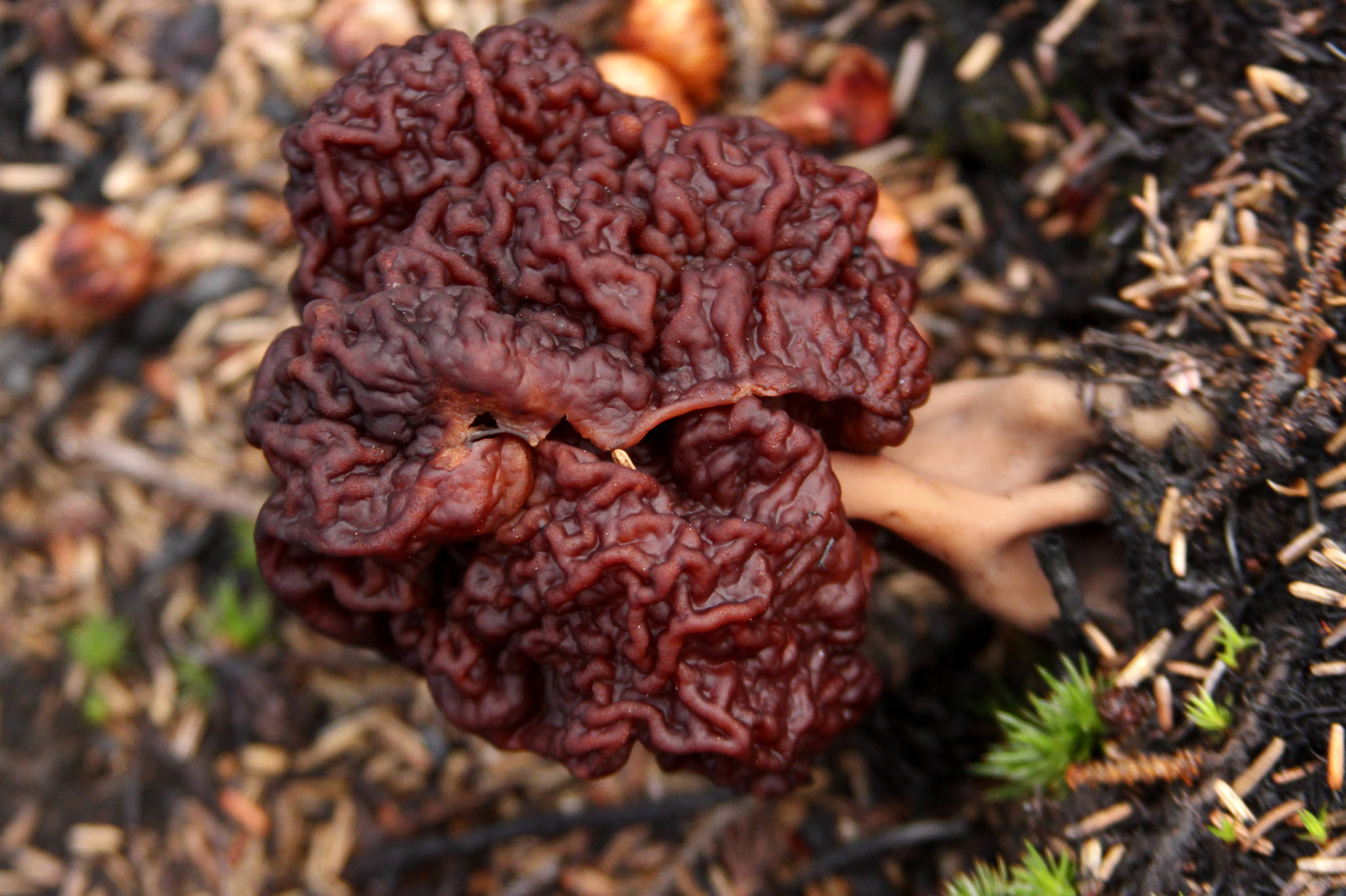“Once you find one, you’ll know what you’re looking for,” Rodney Pierce said with his eyes glued to the charred ground of the Funny River burn area, scanning the nooks and crannies for what he calls the “elusive morel mushroom.”
The morel is a hollow mushroom covered in brain-like ridges with a coloring that ranges from an off-tan to a dark-brown. When it sprouts from the ground, it can look like a pine cone sitting straight up.
They pop up all over the world, but in Alaska, now is the time to grab a pair of boots, a mesh bag and head to a burn area.
“When they closed clam digging, I started doing this,” Pierce said, trekking through the woods with his wife Connie and dog Rider on May 26. Pierce, of Funny River, has been living on and off in Alaska for years. He started mushroom hunting within the past few years, but already has stories of 10-pound bags and mushrooms taller than beer cans.
The basics to getting started in mushroom hunting are easy, but the first question is where to go.
“It can be muddy, it can be mucky,” said Soldotna resident George Spady, organizer of the Kenai Peninsula Mycology Society for the Study of Mushrooms and Lichen. “There are going to be mushy spots there, but the burn areas are the best places to go.”
Burn areas are important for two reasons, Spady explained. First, it’s easier to see the mushrooms without the underbrush, making it great for beginners.
“They definitely can hide themselves easily in underbrush,” Spady said. “Burn areas are great, though, because you have a plentiful ability to see something from 20, 30, 40 feet away and still be able to identify it.”
Second, morel mushrooms are more prevalent after a burn for “unknown reasons,” Spady said.
“It’s amazing what grows after a fire,” Pierce said, “How Mother Nature replenishes itself.”
Finding yourself a good morel spot is the gift that keeps on giving and, often, remains a well-guarded secret to the hunter that identifies it.
“If you identify a spot, you’ll probably find morels there every year, consistently,” Spady said, “barring any extreme weather.”
The second question to morel hunting is when to go.
“Temperatures need to be in the upper 50s, lower 60s to get the morels out,” Spady said. “It has to be there for about a week or two weeks. Then, you need to have enough moisture and rain. Those are the two key items that bring out morels.”
With a good spot in mind and a week or so of warm, rainy weather in the past, the next step is to get out and keep your head down.
Pierce recommends a mesh bag for mushroom hunting, which allows them to breath throughout the hunting trip and will allow the picked morels to continue dropping their spores.
It’s important to be careful about what goes in the mesh bag, too.
“There are a species of mushrooms called false morels,” Spady said. “It can be difficult to identify the difference but they have a little more color to them, more orangish and burgundy, and they have a more solid stem.”
False morels have a high concentration of a chemical derivative of hydrazine, which is used for rocket fuel, and can cause mild to intense stomach irritation. True morels may also contain small traces of the derivative, bit it is easily cooked off.
“You probably don’t want to eat them raw,” Spady said. “And I always tell people for who have not tried (true) morels before to taste a bite or two one day and if you get along with it fine, the next day you can eat it without problems.”
Spady also recommends heading out with a seasoned mushroom hunter to avoid any confusion between true and false morels, but a Google image search of the different species would also be helpful.
“When you see them, you see them. Otherwise, you don’t,” Connie Pierce said as she bent down to pluck a morel — the final stage to mushroom hunting and, often, the most debated.
“In Washington, they told me to cut them and leave the stem,” Rodney Pierce said. “Here, they tell me to take the whole thing.”
Although both ways will get the mushroom out of the ground and onto the dinner table, research shows that plucking the mushroom’s stem will result in a larger mushroom yield the following year.
“They don’t really know why, but we do know that (plucking them) sends out more shoots and more roots, so there will be many more mushrooms popping up on a plucked area than when you slice them off,” Spady said.
After all the mushrooms have been plucked, or for the lucky ones with no more room to hold them, the next step is hunter’s choice.
“I like them fresh, I like them with sauces,” Spady said. “They’re best eaten fresh. So, share them with friends and family when they’re fresh and most delicious.”
The morels can also be dried, or frozen for use in sauces later.
“You take these home and cook them up in butter,” Connie said as she counted that afternoon’s haul of nearly 30 morels, smiling. “You will not starve tonight.”

